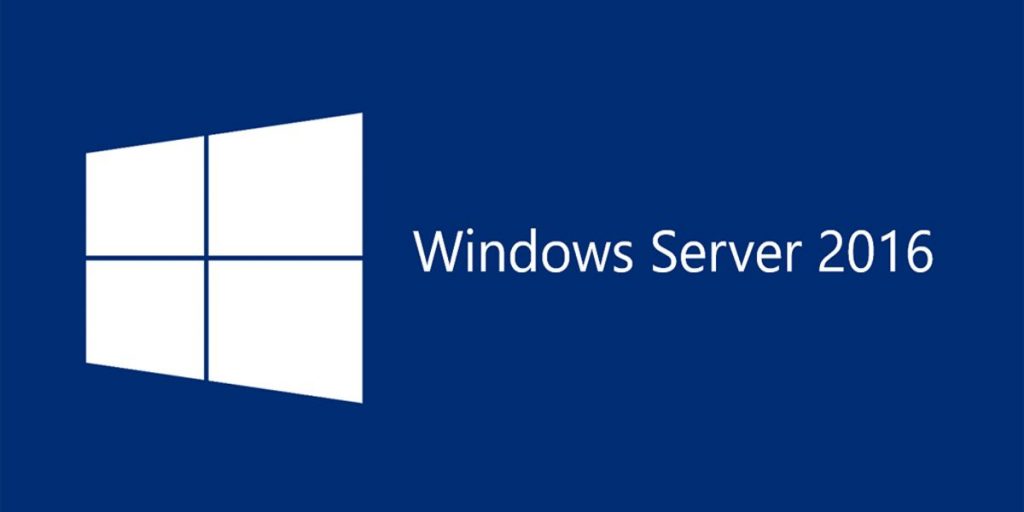
Windows Server 2016 was released on September 26, 2016 at Microsoft’s Ignite conference and broadly released for retail sale on October 12, 2016. It has two successors: Windows Server 2019, and the Windows Server Semi-Annual Channel, which excludes the graphical user interface and many older components.
Windows Server 2016 Editions
Server 2016 is available in three major editions
- Essentials
- Standard
- Datacenter
Minimum Hardware Requirements
- Processor – 1.4 GHz 64-bit processor.
- RAM – 512 MB.
- Disk Space: 32 GB.
- Network: Gigabit (10/100/1000baseT) Ethernet adapter, 1Gbps connection is ideal.
Maximum Hardware Supported
- Essentials Editions RAM 64 GB and 2 CPUs
- Standard and Datacenter editions RAM 24 TB and 512 cores
Comparison of Essential Standard and Datacenter editions of Windows Server 2016
| Edition | Ideal for… | Virtualization rights | Licensing model | Client Access Licenses | RAM Limit | CPU Limit |
| Essentials | Small businesses with basic IT requirements; very small or no IT department | no, one physical or one virtual installation | CPU-based | CALs not required * (limited to 25 users / 50 devices) | 64 GB RAM | max. 2 CPUs |
| Standard | For all companies that require advanced features and virtualize to a lesser extent | 2 virtual machines ** or 2 Hyper-V Container | Core-based | CALs required *** | 24 TB RAM | 512 Cores |
| Datacenter | For all companies with high requirements on IT workloads with large number of virtual systems | unlimited virtual machines and Hyper-V Container | Core-based | CALs required *** | 24 TB RAM | 512 Cores |
(*) An RDS CAL is required to access Remotedesktop.
(**) The Windows Server Standard Edition license allows 2 OSEs (Operating System Environments) when all physical cores are licensed.
(***) CALs are required for every user or device, which connects directly or indirectly to a server. Details can be found on the Microsoft website in the area Client Access Licenses and Management Licenses.
Comparison of Physical / Virtual instances
Windows Server 2016 instances can be operated in either a physical operating system environment (POSE) or a virtual operating system environment (VOSE):
| Edition | Running instances in POSE | Running instances in VOSE |
| Standard | 1* | 2 |
| Datacenter | 1 | unlimited |
(*) When a customer runs all the allowed virtual instances, the physical instance can only be used to manage and maintain the virtual instances.
(**) Essentials can be run in a physical or virtual operating system environment.
Best 10 New Windows Server 2016
- Nano Server.
- Containers.
- Linux Secure Boot.
- ReFS.
- Storage Spaces Direct.
- ADFS v4.
- Nested Virtualization.
- Hyper-V Hot-Add Virtual Hardware.
- PowerShell Direct.
- Shielded VMs.
Windows 2016 Server General Questions
What is the nano server?
Nano Server is a stripped-down version of Windows Server developed by Microsoft specifically for running cloud applications and containers. … With Nano Server, there is no local logon or Remote Desktop. Instead, management of the OS is performed remotely via WMI and PowerShell cmdlets.
What is Windows Containers?
Windows containers are abstracted, isolated and portable operating environments supported by the Microsoft Windows Server 2016 operating system and managed with tools such as Docker and PowerShell.
What is Linux Secure Boot?
Linux Secure Boot is a feature in Windows 10 and Windows Server 2016 that allows some Linux distributions to boot under Hyper-V as Generation 2 virtual machines. Linux Secure Boot corrects an issue where many non-Microsoft operating systems could not boot on computer platforms that use UEFI firmware.
What is ReFS?
Resilient File System, codenamed “Protogon”, is a Microsoft proprietary file system introduced with Windows Server 2012 with the intent of becoming the “next generation” file system after NTFS. In Windows Server 2016, we finally get a stable version. ReFS is intended as a high-performance, high-resiliency file system intended for use with Storage Spaces Direct.
What is Storage Spaces Direct?
Storage Spaces Direct is a feature introduced in Windows Server 2016 that extends the software-defined storage (SDS) stack in Windows Server to enable building highly-available (HA) storage systems with local storage.
What is ADFS v4?
Active Directory Federation Services (ADFS) is a Windows Server role that supports claims (token)-based identity. Claims-based identity is crucial thanks to the need for single-sign on (SSO) between on-premises Active Directory and various cloud-based services.
ADFS v4 in Windows Server 2016 finally brings support for OpenID Connect-based authentication, multi-factor authentication (MFA), and what Microsoft calls “hybrid conditional access.” This latter technology allows ADFS to respond when user or device attributes fall out of compliance with security policies on either end of the trust relationship.
What is Nested Virtualization?
Nested Virtualization is a new technology in Windows Server 2016 Technical Preview 4 that allows you to virtualize a Hyper-V host and run virtual machines on that virtualized host.
What is Hyper-V Hot-Add Virtual Hardware?
Hot-add and remove feature allows you to configure hardware devices on Hyper-v virtual machine without reboot. In Windows Server 2016, Hot-add and remove network adapter and memory is the new & enhanced feature added in Windows Server 2016.
What is PowerShell Direct?
PowerShell Direct is a new PowerShell feature in Windows Server 2016 and Windows 10 that allows to create a direct local PowerShell session with any virtual machine run on a Hyper-V host, meanwhile the connection is established not via the network, but through the internal VM bus.
What is Shielded VMs?
Shielded VMs, or Shielded Virtual Machines, are a security feature introduced in Windows Server 2016 for protecting Hyper-V Generation 2 virtual machines (VMs) from unauthorized access or tampering.